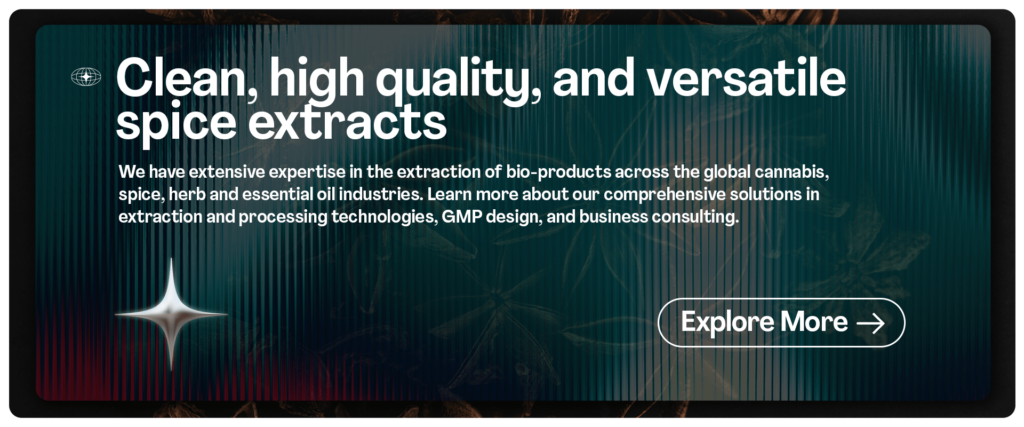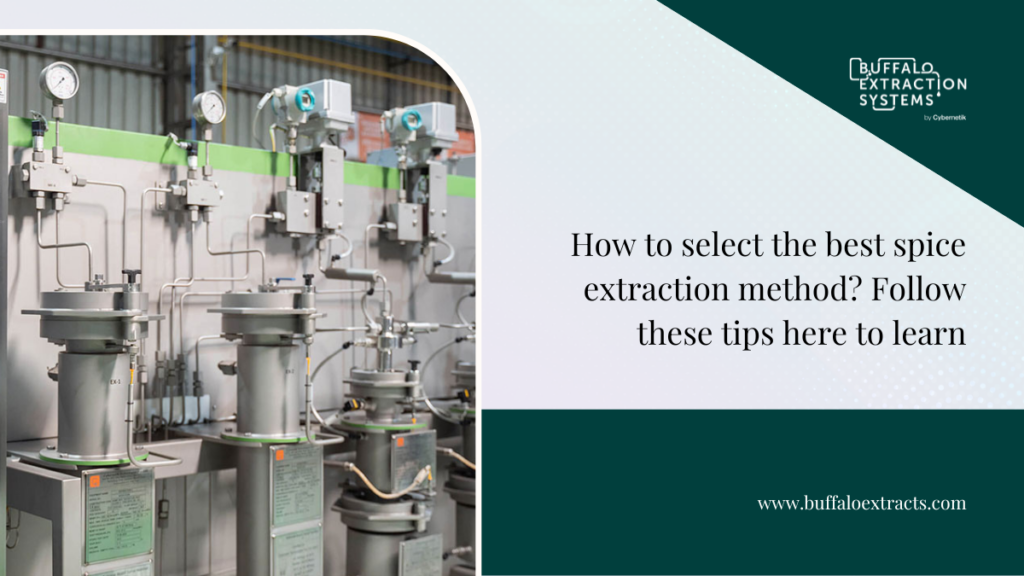Selecting the Best Spice Extraction Method
Spices have played an important role in human culinary history for centuries, adding depth, aroma, and flavor to cuisines worldwide. However, to fully harness the exquisite essence of these aromatic treasures, one must master the art of spice extraction. Choosing the most suitable spice extraction method is a pivotal step in this aromatic journey, as it determines the quality and character of the end product. From the fiery heat of chili peppers to the soothing fragrance of lavender, each spice holds a unique composition, making the selection of the extraction method an intricate task.
In this guide, we will explore the essential considerations and practical tips for selecting the best spice extraction method, ensuring that you unlock the full spectrum of flavors and aromas hidden within these culinary gems.
Understanding Spice Extraction
Spice oil extraction is the process of isolating and collecting the essential compounds from the spices, such as the essential oil extraction from spices, flavor compounds, and pigments. These compounds contribute to the flavor, aroma, and visual appeal of the dishes. Different spices require different extraction methods due to their chemical composition and physical properties.
Selecting the Best Spice Extraction
Several factors influence the selection of the spice extraction method such as CO2 extraction for essential oils. It is crucial to consider these factors when selecting the most suitable extraction method for a particular spice:

- Understand Your Spice: Before embarking on any extraction process, it is vital to grasp the nature of the spice you are working with. Spices can be broadly categorized into those with water-soluble compounds and those with oil-based compounds. Some spices, such as cinnamon or cloves, contain both types of compounds, which necessitates a careful evaluation of their chemical composition.
- Choosing the Right Solvent: Selecting an appropriate solvent is pivotal for successful spice extraction. The choice of solvent depends on the spice’s composition and the compounds you wish to extract. For instance, water is an excellent solvent for water-soluble compounds, while alcohol (typically ethanol) and hexane work well for extracting oil-based compounds. Supercritical CO2, on the other hand, is a cutting-edge option for certain high-value extracts but requires specialized equipment for the application of supercritical fluid extraction.
- Consider the End Product: Your intended end product is a crucial factor influencing the choice of Spice oil extraction method. Do you aim to obtain essential oils, oleoresins, or a spice extract tailored for culinary applications? Each of these goals may require a different approach, as the extraction process will prioritize specific compounds and characteristics.
Extraction Method Options:
- Steam Distillation: This method is ideal for extracting essential oils from aromatic spices. It relies on the controlled application of steam to release and capture volatile compounds.
- Solvent Extraction: A versatile method, solvent extraction employs solvents such as ethanol, hexane, or application of supercritical fluid extraction to extract a wide range of compounds from spices. This method offers flexibility but requires careful consideration of solvent safety and disposal.
- Maceration: Maceration involves immersing the spice in a solvent, typically alcohol, over an extended period. This process allows the extraction of flavors and aromas through soaking.
- Cold Pressing: Cold pressing is tailored to spices with high oil content, such as black pepper or sesame seeds. It is a mechanical method that pressurizes the spice to release its oils without the use of heat.
- Supercritical Fluid Extraction (SCFE): SCFE or supercritical CO2 extraction process employs supercritical CO2, a state where carbon dioxide behaves as both a gas and a liquid. This method is highly efficient for extracting specific compounds but requires advanced equipment and expertise.
- Consider Equipment and Resources: The equipment and resources available to you will significantly impact your choice of extraction method. Some methods are more compatible with small-scale operations, while others such as CO2 extraction for essential oils demand specialized machinery and resources. Consider your budget, space, and technical capabilities.
- Safety and Environmental Concerns: Always prioritize safety and environmental considerations when selecting an extraction method. Toxic solvents or improper disposal practices can pose significant risks. Ensure you follow safety protocols and explore eco-friendly alternatives.
- Efficiency and Yield: Efficiency and yield are critical factors, especially for commercial applications. Some methods may be more efficient at extracting specific compounds, while others may yield higher quantities of the desired product. Balance these aspects based on your objectives.
- Quality Control: Implement robust quality control measures to monitor the extraction process. Regular testing and analysis help ensure the final product meets your desired quality standards, whether it’s for culinary or industrial use.
- Cost Analysis: Conduct a thorough cost analysis, considering supercritical CO2 extraction machine, solvents, labor, and ongoing operational expenses. Ensure that your chosen method aligns with your budget and long-term sustainability goals.
- Consult Experts: Don’t hesitate to seek guidance from experts in the field or refer to scientific literature when choosing an extraction method. Their knowledge and experience can provide valuable insights into optimizing your extraction process.
In Conclusion
Selecting the best spice extraction method is a crucial step in harnessing the rich flavors and aromas locked within these precious ingredients. By considering factors such as the type of spice, desired end product, available resources, and safety considerations, you can make an informed choice that suits your specific needs. Whether you opt for steam distillation, solvent extraction, maceration, cold pressing, supercritical fluid extraction, or any other method, the key is to blend science, art, and practicality to unleash the true essence of spices. With careful planning, experimentation, and dedication to quality, you can embark on a flavorful journey that transforms these culinary treasures into delightful additions to your creations.

